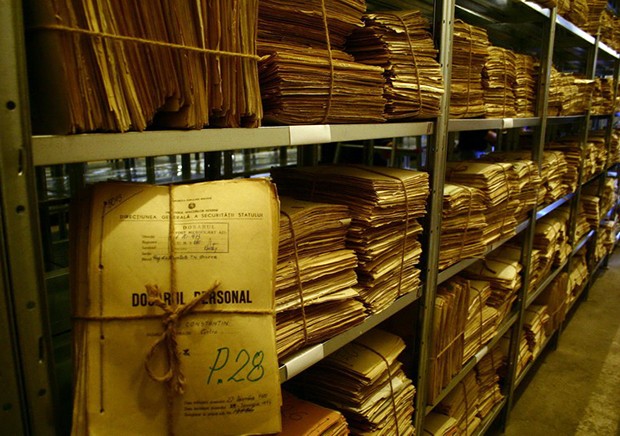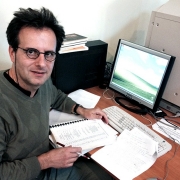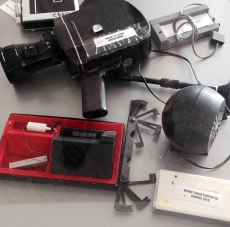He recently received a $204,000 Insight Grant from the Social Sciences and Humanities Research Council (SSHRC) of Canada for a five-year project entitled “Between the Devil’s Confessors and God’s Martyrs: Resistance and Collaboration of Religious Groups under Communism in Romania.”
“This research program will be the first to uncover the many shades of collaboration/resistance of the main religious groups in Communist Romania from 1945 to 1989, and the way its past has been re-evaluated and instrumentalized in post-Communism,” says Turcescu, who is the grant’s principal investigator.
Surveillance and the secret police
In May 2014, Turcescu visited the former Communist secret police archives in Bucharest, where he interviewed researchers and collected files documenting the surveillance of various religious groups and individuals.
 In Bucharest: an archive of the former Communist secret police, where agents created colour-coded maps to keep track of Greek Catholic priests and their level of opposition to the regime. | Photo courtesy of Lucian Turcescu
In Bucharest: an archive of the former Communist secret police, where agents created colour-coded maps to keep track of Greek Catholic priests and their level of opposition to the regime. | Photo courtesy of Lucian Turcescu

 The tools of spy craft used by Romania’s former Communist secret police included universal lock picks and early recording devices. | Photo courtesy of Lucian Turcescu.
The tools of spy craft used by Romania’s former Communist secret police included universal lock picks and early recording devices. | Photo courtesy of Lucian Turcescu.